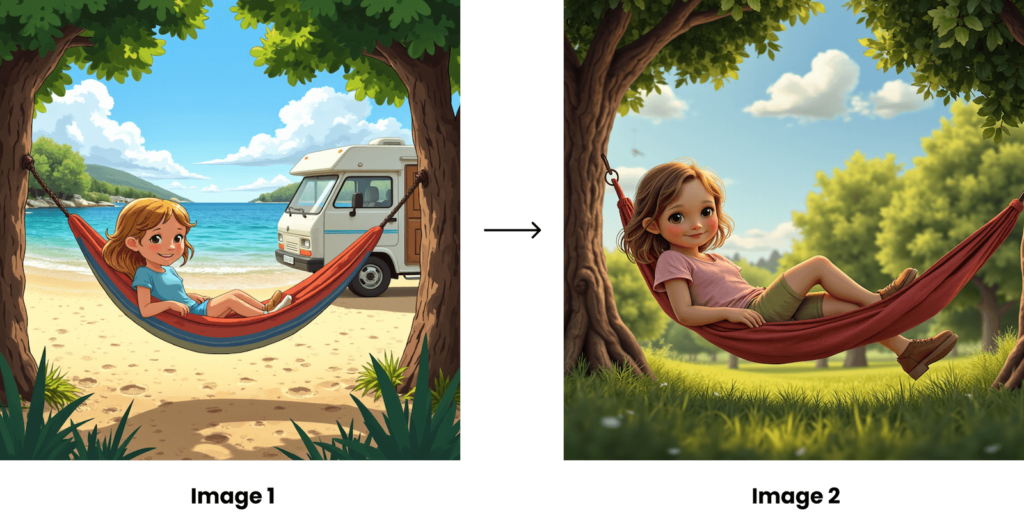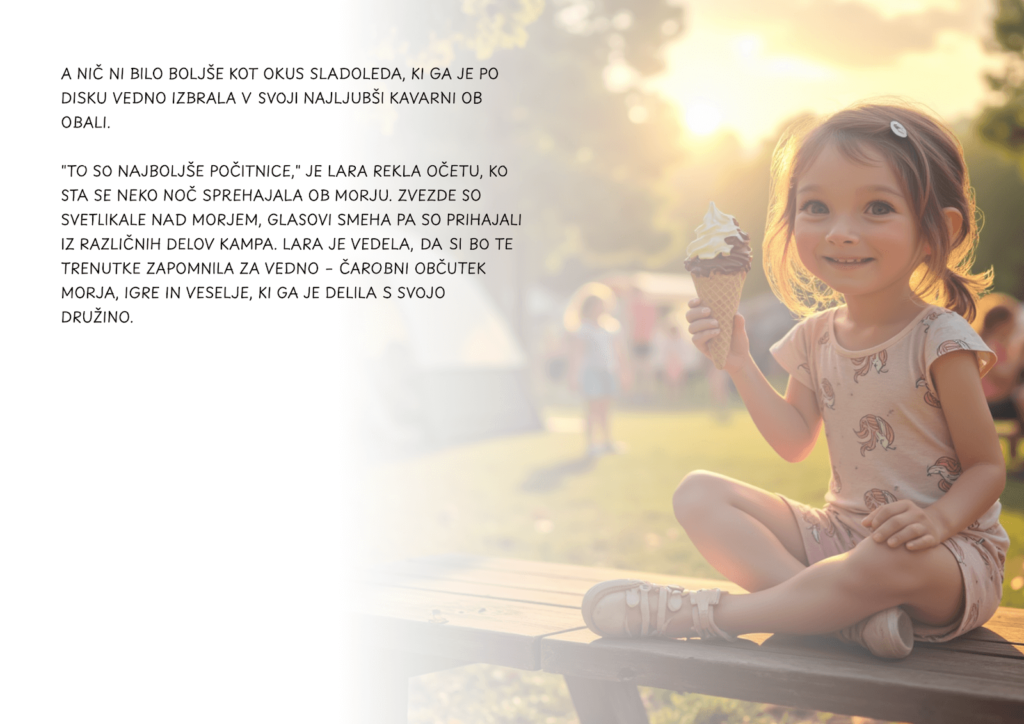Has artificial intelligence really advanced to the point where it can create content on its own? Recently, I faced the challenge of choosing a gift for my older daughter, who was celebrating her sixth birthday. I always strive to add a personal touch to gifts so that they hold long-term sentimental value. The idea struck me to create a personalised book that would encapsulate the events and adventures Lara (my older daughter) experienced in the past year.
I recalled how, at her birth, I ordered a personalised book for newborn Lara from a brand specialising in such “personalised” books for all occasions. I could only choose the girl’s name, anticipate how she might look when she grows up, and select ten out of fifteen possible stories. After about a week, we received the “personalised” book in our mailbox, featuring Lara’s character in various (selected) scenarios. The level of customization wasn’t particularly high—the chosen character appeared in selected scenes, and her name was added to a few images.
Six years later, Lara has, of course, grown up slightly differently than we imagined at her birth. Today, that book is just another among all the impersonal books she’s received as gifts. When Lara picks it up now, she doesn’t recognize herself in it. This motivated me even more to create a better product than the one I (quite expensively) paid for at her birth, which ultimately didn’t hold much value.
When I started working, I realised my mission would involve three main steps:
- Stories
- Images to visually support the stories
- Some system to put together stories and images in “print-ready” format.
Stories
I’m the kind of person who finds it incredibly difficult to create appropriate content when staring at a blank sheet of paper, whether it’s fiction or real stories. Especially if the stories need to be presented in an engaging way for a six-year-old. So, I decided to try preparing the content with the help of artificial intelligence. I made a list of ten events that happened to Lara in the past year and wrote about three short bullet points for each event to serve as ideas for the AI.
Then I turned to artificial intelligence. I “instructed” ChatGPT’s model 4 to mimic the writing style of Lara’s favorite author, Paulette Bourgeois, the creator of the Franklin the Turtle series. I also guided it to write content focused on education, positivity, and appropriateness for six-year-olds. After inputting all ten events and key points for each scenario, I must admit the results pleasantly surprised me—especially considering the content was generated in Slovenian, where ChatGPT sometimes struggles with the language.
With that, I had the content part covered.
Images
Some time ago, I experimented quite a bit with advanced image generation tools like Midjourney. All well and good, but when it comes to using a consistent character, Midjourney isn’t the best choice since you can’t train the model on a set of your own photos of real people. You can instruct it to create a “consistent character” based on one photo, but due to the lack of training material, the results aren’t sufficiently similar to the original, and I mostly ended up with unsatisfactory outputs.
So, I used the Flux model, which I ran on the Replicate platform, and trained it on a set of original images—the documentation recommends between 8 and 20 images; I used 18. Before training the model, it’s possible to adjust various training parameters, from the number of steps to LoRA parameters. Combinations of these parameters ultimately yield quite different results, so it’s wise to take more time at this step to study the parameters and their effect on the final product. Training the model on your own images takes between 30 minutes and an hour and costs about 2–3 euros for the computational power used. Each generated image from the trained model then costs just a few cents. Besides paying per use—so no subscriptions like with Midjourney—the results are significantly better than with other models.
For prompts for the Flux model, I used the same ChatGPT as for the stories.
During the process, I noticed that the Flux model is better at generating photographs than illustrations. For illustrations, I sometimes had to repeat the prompt multiple times to get a good result. I also observed that in scenes not well-represented on the internet—where these models usually learn—the images tend to a specific style that I hadn’t specified in the prompt. I presume the model doesn’t have enough relevant data for consistent and relevant results. When I adjusted the prompt slightly—removed a word or replaced it with a similar one—the model produced good results.

Bringing It All Together
So, I had the stories and illustrations featuring our birthday girl. For merging the text with graphical elements, I chose the tool Figma. By setting up frames, padding, and Auto-layout, I automated a significant part of creating the final product, so on individual pages, I only had to change the images via the graphical interface. I also processed the images with a preset mask to add a slight gradient, which looks truly premium on heavier paper. It was most important to me that, in the end, the page layout for printing was entirely consistent and that flipping through the book gives you that premium feel like with professional printed products.

The Final Product
In the end, I managed to create a 15-page book, which I gave to Lara. I love when homemade gifts truly come alive for children, and with this book, that’s exactly what happened. Lara was thrilled! She especially loved that she immediately recognized herself as the main character in the book and exclaimed, “Daddy, that’s me!” Another significant advantage compared to generic books is that the content is entirely tailored to her—stories that actually happened to her in the past year. Now, every evening before bed, we delve into reading her stories and reflect on past adventures.
Overall, what surprised me the most is how much artificial intelligence technology in the field of generative images has advanced in the past year and how accessible it has become. Without the need for a supercomputer or powerful graphics cards, you can, for a few euros, train your model and create images on the fly, paying per use. By combining a few skills, you can actually produce products at home that were, until recently, entirely in the domain of specialized companies.